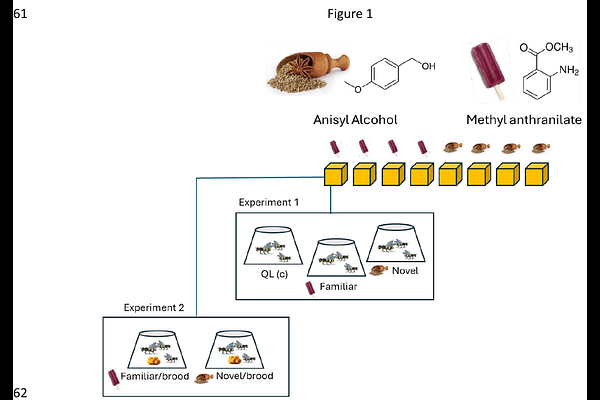A social bee can learn a novel queen pheromone

A social bee can learn a novel queen pheromone
Amsalem, E.; Hefetz, A.
AbstractMany pheromone responses are hardwired into the insect nervous system and are essential for critical behaviors such as mating, alarm signaling, and trail following. Workers of social species are also assumed to respond innately to queen pheromones, leading to changes in behavior and reproductive physiology. However, accumulating evidence highlights the potential roles of learning and experience in responses to pheromones regulating reproductive division of labor. To examine if the response to queen pheromone can be learned, we introduced bumblebee workers (Bombus terrestris) to a new queen pheromone by treating the queen daily with floral scents unfamiliar to the workers: either anisyl alcohol or methyl anthranilate. We allowed perfumed queens to establish colonies and examined worker attraction and egg laying following daily exposure to these odors without the queen, both with and without brood as context. Workers preferred the odor they grew up with and exposure to learned odors without the queen influenced worker egg laying only in the presence of brood, surprisingly resulting in increased egg laying. Our study demonstrates that workers can modify their behavior after learning an odor associated with their queen or nest. These learned odors function as context-dependent releaser pheromones, influencing worker attraction and egg-laying behavior.